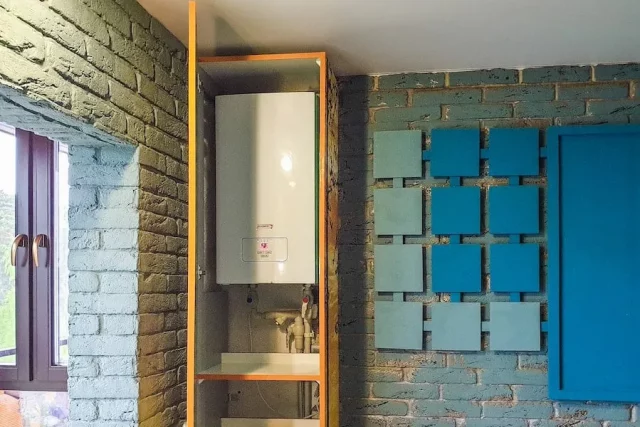Are you tired of receiving sky-high energy bills every month? Do you want to learn about the common culprits that drain your electricity and how to reduce them? You’ve come to the right place!
In this blog post, we’ll explore seven potential causes for a high energy bill and provide practical tips on how to save money without sacrificing comfort. We’ll cover all the bases so that you can take control of your energy usage and lower those pesky bills.
Get ready to say goodbye to sticker shock and hello to savings!
1. Inefficient Appliances
If your appliances are more than 10 years old, they are probably not very energy efficient. Appliances such as refrigerators, freezers, dishwashers, and clothes washers and dryers use a lot of energy – and if they aren’t operating efficiently, that means your energy bill will be higher.
Replacing old appliances with newer, more energy-efficient models is a great way to lower your energy bill. You may consider solar-powered appliances that use renewable solar energy. Some appliances are easy to use while others may need professional help which you won’t have to worry about, as there are top installers always available to set those up for you.
2. Drafts
One of the biggest causes of a high energy bill is drafts. If your home has any gaps or cracks around doors and windows, cold air can seep in and make your heating system work overtime. In addition, drafts can cause your furnace to cycle on and off more frequently, which wastes energy and drives up your bill.
Fortunately, there are some easy ways to seal up drafts and improve the energy efficiency of your home. Start by weather-stripping doors and windows, and then check for any other openings where air might be leaking in.
You can also add insulation to your attic or crawl space to keep heat from escaping through the roof. By taking these simple steps, you can keep your home warm all winter long without seeing a big increase in your energy bills.
3. Poor Insulation
One of the main causes of a high energy bill is poor insulation. This means that your home is not able to retain heat as well, causing your heating system to work harder and use more energy. There are a few things you can do to improve the insulation in your home.
Check for gaps and cracks around doors and windows and seal them with caulk or weatherstripping. Add insulation to your attic, walls, and floors. Install storm doors and windows.
Use blinds, curtains, and shades to block out sunlight and heat in the summer. This helps keep the inside of the house cooler and makes it easier on air conditioners, thus reducing energy costs associated with cooling the home. Additionally, shades, curtains, and blinds can provide an attractive decorative touch to any room.
4. Thermostat Settings
If your energy bill is higher than normal, one of the first things you should check is your thermostat settings. If your home is heated with a furnace, you should set the thermostat to 68 degrees when you are home and awake, and lower it to 55 degrees when you are asleep or away from home.
If your home has a heat pump, you should set the thermostat to 78 degrees when you are home and awake, and lower it to 58 degrees when asleep or away. A heat pump is a system that uses outside air to heat or cool your home. As a result, it requires more energy use than traditional heating and cooling systems, leading to a higher energy bill.
5. Lighting
Your home’s lighting accounts for about 10% of your total energy bill. So, it’s important to be mindful of how you use lighting throughout your home. There are a few key ways you can reduce your energy usage and lower your monthly bill.
During the day, open up your curtains or blinds to let in natural light. This will help reduce the need to use artificial lighting, which can add up over time.
Invest in LED bulbs. LED bulbs are more energy-efficient than traditional incandescent bulbs. They last longer and use less electricity, so they’ll save you money in the long run.
Make use of dimmers. Dimmers can help you better control the amount of light you’re using in a room. By dimming the lights, you can save energy without sacrificing brightness or visibility.
6. Water Heater
If your energy bill is higher than normal, one potential reason could be that your water heater is set too high. The U.S. Department of Energy recommends setting your water heater to 120 degrees Fahrenheit to save money on your energy bill.
You can check the temperature of your water heater by looking at the thermostat on the unit. If it is set higher than 120 degrees, simply turn it down to the recommended setting.
7. Phantom Loads
Most people don’t realize that even when they’re not using an appliance, it’s still using energy – this is known as a phantom load. Phantom loads can account for up to 10% of your total energy usage, so it’s important to be aware of them and take steps to minimize them.
One of the biggest phantom loads is your home’s standby power. Standby power is the electricity used by devices when they’re turned off but still plugged in. This can include items like your:
- TV
- computer
- printer
- phone charger
While they may not be in use, they’re still drawing power from the outlets. To help reduce your phantom load, unplug any devices when you’re not using them.
If you have multiple devices plugged into one outlet, consider using a power strip so you can easily switch them all off at once. You can also look for energy-efficient appliances that use less power when in standby mode.
Steer Clear Of the Culprits Of high Energy Bill
Saving money on energy bills does not have to be a daunting task. With an understanding of where energy is being used and how to reduce energy consumption, consumers can lower their bills and keep their wallets plump.
Steer clear Of the culprits of having a high energy bill, and you can start seeing real savings. Start taking steps toward energy efficiency today and reduce your energy bill.














